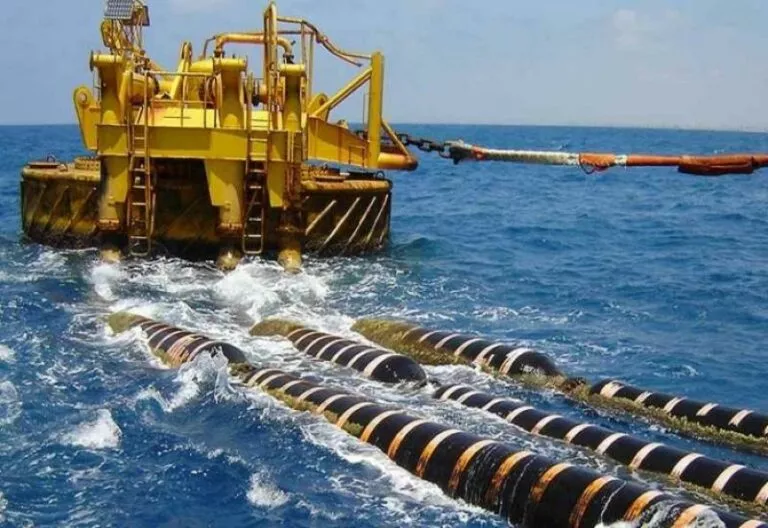From EuroAsia to Great Sea Interconnector: The Transformation of a Cypriot Vision

There are technical ambiguities, funding gaps, and political expediencies that affect the credibility of the initiative. Although Greece is portrayed as the savior of the project, concerns remain about its cost, the absence of comprehensive cable-laying studies, and the financial burden that will be passed on to consumers from 2025 onward.
Cyprus’s case is quite different from that of Greece and Bulgaria, mainly due to its geographic isolation and lack of physical land connections, such as those between Greece and Bulgaria via 400 kV ultra-high voltage lines. Cyprus pays high electricity prices due to its dependence on heavy fuel oil and the absence of electrical or gas interconnection. Not to overlook its vast potential in natural gas, Cyprus also has enormous solar energy potential, currently undeveloped, which could be stored in batteries or exported via electrical interconnection with Greece. In this context, the EuroAsia Interconnector was presented as a landmark project for Cyprus’s energy integration into the EU.
However, the Cypriot company EuroAsia Interconnector Ltd fully withdrew from the project on October 23, 2023, due to financial difficulties, outstanding payments to Nexans Norway, and failure to secure financing from the European Investment Bank.
ADMIE (the Independent Power Transmission Operator of Greece) took over as the implementing entity, assuming responsibility for the technical specifications and cost management of the project, which has been revised from €1.65 billion to €1.9 billion, with approximately €757 million in EU funding and the remainder covered by national Interconnector with a 25% stake, fulfilling the EU’s requirement for the participation of a Transmission System Operator (TSO) as a guarantor of energy security.
This development marks the transformation of the project from Israeli-Cypriot to Greek-Chinese, as ADMIE is 51% owned by the Greek state and 24% by the State Grid Corporation of China. From that point on, the project is referred to as GSI (Great Sea Interconnector). Greece, through ADMIE, undertook the implementation of the project, aiming among other things to strengthen its position as an energy hub in the Eastern Mediterranean. Cyprus loses direct control and finds itself on the periphery of a project it initiated. Its energy integration into the EU now depends on ADMIE’s decisions and the geopolitical balance between Greece, Israel, and China.
The transfer of EU grants to ADMIE was not accompanied by a clear commitment on how Cyprus would benefit. Despite positive statements, the reality is more complex due to lack of transparency and communication confusion from both the Cypriot and Greek sides. The initial phase of cable laying did not include Cypriot waters, but rather Greek and Egyptian waters in the area of the partially recognized EEZ between Greece and Egypt. ADMIE’s delay in fulfilling contractual obligations is linked to the cable order and the seabed mapping studies for laying, which did not progress. There are contradictory statements: on one hand, it is claimed that the project will not cost Greek consumers, while on the other, installment payments are expected from 2025 for Greece and from 2027 for Cyprus.
The Greek state did not sue Turkey for obstruction, opting instead for the diplomatic route, and the EU has reasons not to proceed with legal action, as it is interested in migration agreements, commercial access to the Black Sea, and defense cooperation. In conclusion, Cyprus risks remaining a mere end recipient of a cable, without the ability to intervene or negotiate. The wait-and-see stance of part of the Cypriot side and the involvement of the European Public Prosecutor raise questions about transparency, economic viability, and the real strategic intent, with the risk that Cyprus remains energy-isolated and Greece assumes the role of manager without a clear national strategy.
The two viability studies discussed around the GIS/EuroAsia Interconnector project mainly concern the evaluation of the project’s economic efficiency compared to alternative solutions and have sparked intense debate in Greece and Cyprus. The European Investment Bank, as part of the loan approval process, compared the Cyprus-Greece electrical interconnection with the mass installation of 1,350 MW batteries with a 4-hour duration across Cyprus. The study did not correctly calculate the annual performance degradation rate of batteries, which is about 2.6%, and assumed a usage rate of 100%, while in practice it is around 90%. Thus, it calculated two battery replacement cycles, while the cable’s lifespan is 40–50 years, requiring three cycles for an equivalent comparison. The study’s assumptions downgraded the technical alternative of batteries, presenting the interconnection as more advantageous, but creating contradictory interpretations.
The second study, by an independent evaluation firm, examined not only economic viability but also the geostrategic significance of the project. The absence of Cypriot participation in the cable laying raises questions, resulting in the geostrategic value of the project for Cyprus being assessed lower than its commercial dimension, which weakens political support. Both studies do not reject the project and take positions on its economic efficiency and strategic value for Cyprus.
Despite official statements about a “positive net present value,” comparisons between alternatives and especially geopolitical uncertainty weaken the image of the project as a panacea for Cyprus’s energy isolation.
NAFTEMPORIKI / THE N SOCIETY, Wednesday, September 10, 2025
Από EuroAsia σε Great Sea Interconnector: Η μεταμόρφωση ενός κυπριακού οράματος
Republished by PHILENEWS: From EuroAsia to Great Sea Interconnector: A Calm, At Last, Greek Perspective, September 14, 2025